Journal list menu
Export Citations
Download PDFs
ISSUE INFORMATION
RESEARCH REVIEW
Biochar in agriculture – A systematic review of 26 global meta-analyses
- Pages: 1708-1730
- First Published: 01 September 2021
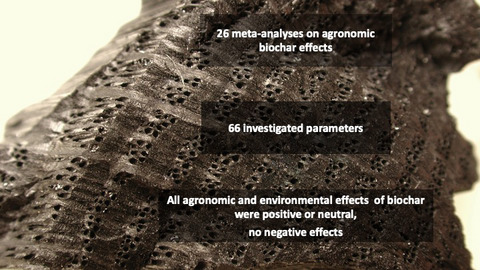
For the implementation of pyrogenic carbon capture and storage (PyCCS), biochar use in agriculture needs to deliver co-benefits, e.g., by improving crop yields, ecosystem services, and/or by improving climate change resilience by ameliorating key soil properties. Here, we summarize 26 rigorously selected meta-analyses published since 2016 that investigated a multitude of soil properties and agronomic performance parameters impacted by biochar application. All 26 meta-analyses show compelling evidence of the overall beneficial effect of biochar for all investigated agronomic parameters.
How biochar works, and when it doesn't: A review of mechanisms controlling soil and plant responses to biochar
- Pages: 1731-1764
- First Published: 27 July 2021
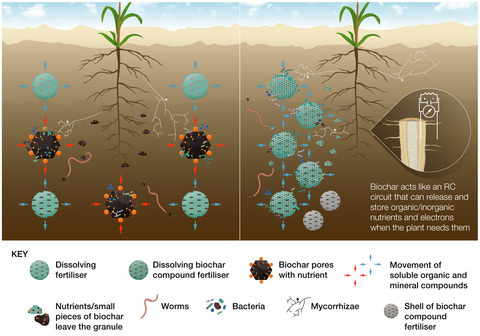
Plant responses to biochar are driven by interrelated biotic and abiotic processes. Biochar properties depend on the feedstock, pyrolysis conditions, and formulation, explaining the variation in responses to biochars. Through its persistence, negative priming effect, and capacity to build soil organic carbon and reduce N2O and CH4 emissions from soil, biochar contributes to climate change mitigation. By improving physical, chemical, and biological soil properties, particularly in the rhizosphere, biochars can stimulate plant growth and increase resilience to disease and environmental stressors. Biochars increase crop yields on average by 10%–42%, with greatest response in acidic tropical soils and sandy dryland soils.
ORIGINAL RESEARCH
Compensation of high nitrogen toxicity and nitrogen deficiency with biochar amendment through enhancement of soil fertility and nitrogen use efficiency promoted rice growth and yield
- Pages: 1765-1784
- First Published: 28 July 2021
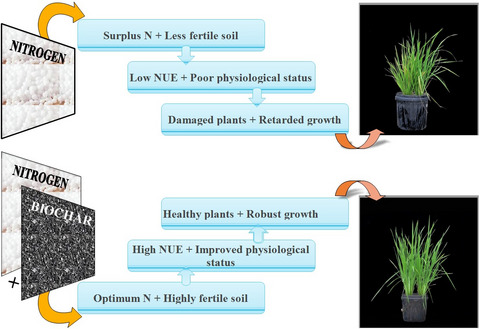
A sustainable approach of biochar application needs a better understanding of its interaction with nitrogen application and the final effect on crop growth. Compared to a single application of B0+N450 (450 kg N ha−1), combined application of biochar and nitrogen B30+N450 could elevate rice plant nitrogen content by 13%; plant height, 30%; aboveground dry biomass plant, 1 136%; spike weight plant−1, 136%; and grain weight plant−1, 36%. These results suggest that biochar amendment combined with a proper amount of nitrogen fertilizer is an effective approach to manage nitrogen utilization, improve plant growth, and increase crop yield on a sustainable basis.
Effects of greenhouse gas emissions timing on alternative biomass and fossil energy sources for district heating
- Pages: 1785-1799
- First Published: 20 August 2021
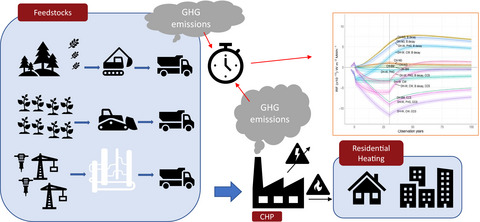
Replacing conventional heating oil-based decentralized residential heating with natural gas, forest residue, or willow feedstocks, and centralized-district heating (DH) infrastructure significantly improves environmental performance. The study implements a temporal analysis using radiative forcing for 30 production years and 100 observation years, identifying the inflection points of greenhouse gas (GHG) emissions for the various residential heating feedstocks. Consideration of carbon capture and storage (CCS) and bioenergy CCS for natural gas and biomass-based DH respectively shows significant atmospheric carbon capture. Such carbon capture technology supplements soil carbon sequestration-based environmental GHG sequestration, for willow when grown on pasture, hay, and grasslands.
Break-even price and carbon emissions of carinata-based sustainable aviation fuel production in the Southeastern United States
- Pages: 1800-1813
- First Published: 21 August 2021
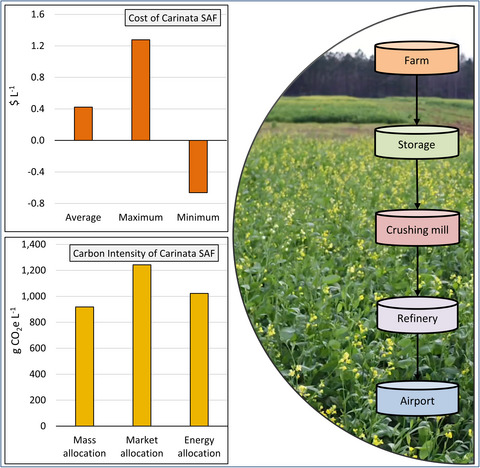
Carinata (Brassica carinata) is a promising non-food winter crop for producing sustainable aviation fuel in the SE United States. The use of carinata-based aviation fuel could save up to 68% of carbon emissions relative to conventional aviation fuel. However, direct financial support is needed (e.g., government subsidies, carbon markets) is needed for promoting carinata production in the region for decreasing the carbon footprint of the aviation sector while ensuring rural prosperity and resilient communities.
Temporal dynamics of free-living nitrogen fixation in the switchgrass rhizosphere
- Pages: 1814-1830
- First Published: 26 August 2021

We evaluated drivers of free-living nitrogen fixation rates (FLNF) and nitrogen-fixing (diazotrophic) microbial community composition in field-grown switchgrass over two growing seasons with high temporal sampling. We found that climate variables are strong drivers of FLNF rates in switchgrass systems, compared to other environmental and biological factors including soil nutrients and diazotrophic community composition. These climate-related responses, including negative responses to extreme rainfall, suggest a potential for loss of nitrogen contributions from FLNF under projected climate shifts.
Time dynamic climate impacts of a eucalyptus pulp product: Life cycle assessment including biogenic carbon and substitution effects
- Pages: 1831-1850
- First Published: 30 August 2021
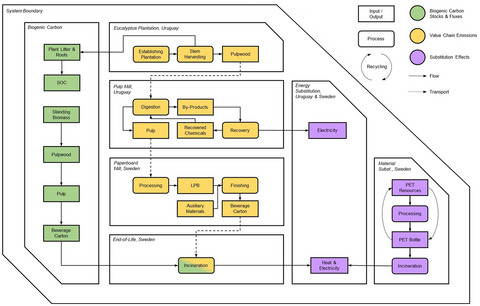
In an expanding bioeconomy, the pulp and paper industry provides opportunities for various low-carbon wood products with promising substitution effects. The objective of this study was to advance time dynamic climate impact assessment of a bioeconomically promising wood product from a system perspective. For this purpose, a time dynamic life cycle assessment (LCA) was conducted on a pulp-based beverage carton. The results revealed dominating climate warming from value chain emissions and slight offsetting by biogenic carbon while material substitution and displacing marginal energy mixes transformed the climate warming into a substantial total cooling effect.










